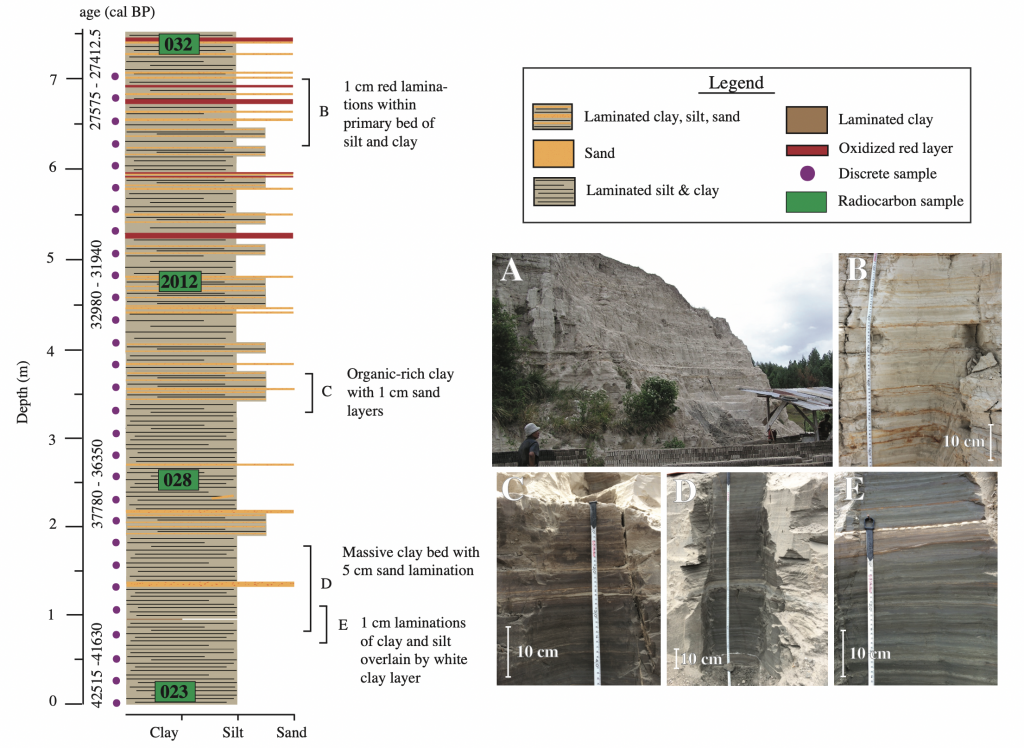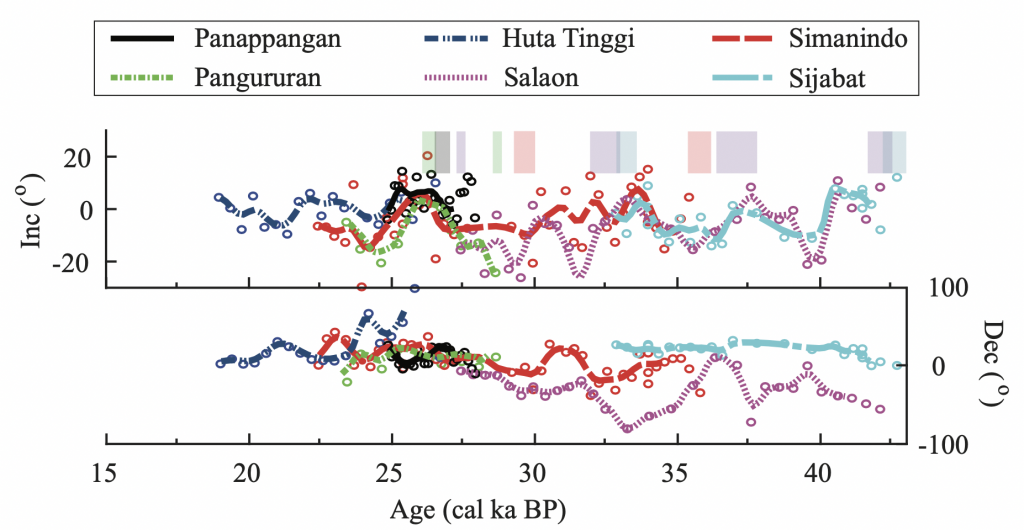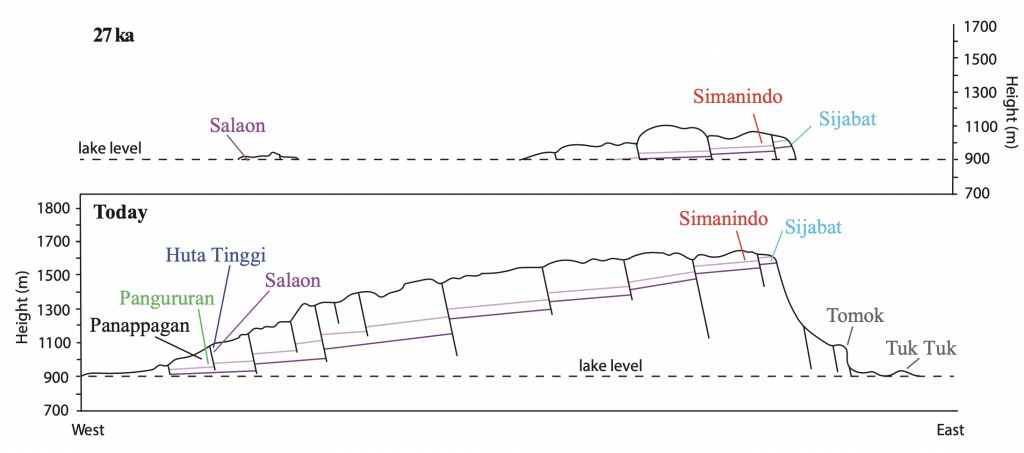The newest collaborative work from OSU’s P-mag Lab and VIPER is hot off the press in Quaternary Research! This new paper, titled, “Paleomagnetic observations from lake sediments on Samosir Island, Toba caldera, Indonesia and its Pleistocene resurgence” comes from Katharine Solada’s Master thesis that she completed in 2018! This is the first paleomagnetic study of the lake sediments uplifted from Lake Toba on Samosir Island! You can access this paper with the following link: https://www.cambridge.org/core/journals/quaternary-research/article/paleomagnetic-observations-from-lake-sediments-on-samosir-island-toba-caldera-indonesia-and-its-late-pleistocene-resurgence/EBB1B2595541473D3B40A0C612BC7FD4/share/299068bf8f5c4249e0dde6b6e138d71315948439. If you want a copy for yourself or cannot access the paper please email either Katharine Solada, Brendan Reilly, or Joe Stoner and we will email you a copy.
This work started back in 2016 when Katharine, Dr. Shan de Silva and colleagues from the Geological Agency of Indonesia traveled to Toba Caldera to collect lake sediment discrete samples on the uplifted resurgent dome Samosir Island. Toba Caldera is located in Sumatra, Indonesia and is responsible from one of the largest supereruptions occurring ~74 ka. After this eruption, resurgent uplift of the caldera floor created Samosir Island, which now sits 700 m above Lake Toba, thus exposing as much as 100 m of lake sediment. These lake sediment sequences provide a unique archive of Toba’s natural history over the past 74,000 years that because of resurgence, are accessible for study. These high-resolution lake sediment records covering 10’s of thousands of years are important because they constrain processes of resurgent uplift, while also recording past variations in Earth’s magnetic field and likely a whole range of environmental processes. This makes Toba Caldera an exceptional natural laboratory for interdisciplinary studies in volcanology, climate, and paleomagnetism.
Katharine and the team collected 173 discrete paleomagnetic cubes and 15 radiocarbon samples from six lake sediment sections across the island. These samples were used to generate the first paleomagnetic secular variation record over much the last ~46 ka in this area which helped constrain the timing, duration and style of resurgence at Toba Caldera after its last major eruption!

Salaon lake sediment stratigraphy log based on field observations. [A] Outcrop photo of Salaon, used by locals for brick making. [B] through [E] massive grey, clay beds, with thin laminations of silt.

Inclination and declination (open circles) plotted for sampled locations (corresponding with assigned color in legend) against the modified (radiocarbon and PSV) age model with 14C tie points (colored blocks). Solid and dashed lines are the data smoothed using a Gaussian filter. Pangururan’s youngest age is omitted.

Conceptual model of resurgent uplift of Samosir Island at ~27 ka (top) compared to today (bottom). Samosir Island uplifted as a trapdoor with inferred piecemeal normal fault blocks deforming the surface causing differential uplift over time. Site locations along two conceptual sediment layers (pink and purple lines) demonstrating sediment section correlation.
